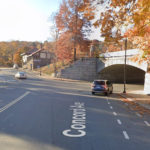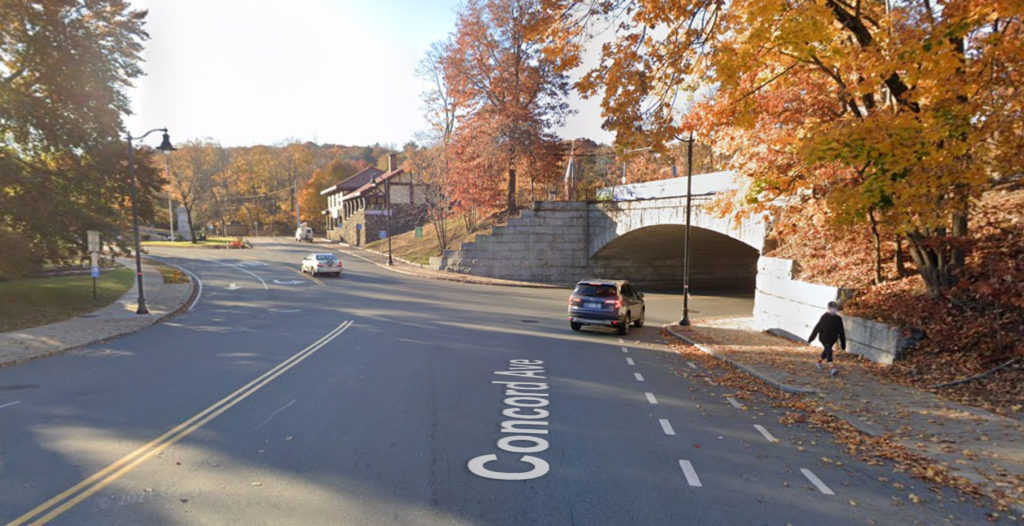
To the Editor:
I am a long-time Boston-area bicycling advocate, CyclingSavvy Instructor, and League Cycling Instructor, responding to the article by Jeff Roth in the July-August Belmont Citizens Forum Newsletter.
I am pleased to see progress on the Belmont Community Path and the Alexander Avenue underpass; also proposals for traffic calming and roundabouts. However, the article states:
“Protected bicycle lanes (PBLs) lower crash rates by a factor of two to 23 times . . . ‘Dooring’ crashes, which account for 20% of bike/car crashes, disappear almost completely with PBLs.”
The term “protected bike lanes” wraps itself in its own conclusion. I call them separated on-street bikeways.
Pedestrians have sidewalks, so why shouldn’t bicyclists get similar treatment? It’s because bicyclists are much faster than pedestrians and much less maneuverable. Safe separated bikeways have few or no crossing and turning conflicts. Many separated bikeways actually increase crash rates—sometimes dramatically. See this review of studies: bit.ly/safety-unproven.
Fear of rear-end crashes, rare in urban areas, tends to override concern about others. But 75% of crashes that send a cyclist to the emergency room, and 10% to 20% of bicyclist fatalities, do not involve a motor vehicle. A 23 times reduction in crashes is patently impossible.
The largest cause of fatal car-bicycle collisions in the Boston area is the right hook: a motor vehicle, usually a large truck or bus, turns across the path of a bicyclist. A very good study of bicycle crashes in Boston clarifies the issues: bit.ly/bos-inj-rept.
Buses on Concord Avenue turning into the high school pose a right-hook risk. And there are numerous other crossing and turning conflicts along Concord Avenue.
Indeed, the Concord Avenue bike lanes should be replaced. But with what?
Only in front of the high school is there room for a proper separated bikeway. It could connect to good places to cross the avenue and be far enough from the street for bicyclists and motorists to negotiate right of way.
Concord Avenue is, however, ideal for striped bike lanes next to the curbed median. No cars park there. Bicyclists there are visible to other road users in every direction, and with no dooring problem, can safely leave more room for motorists to overtake.
Such bike lanes would also lead to the safest position from which to cross to Royal Road at the railroad underpass—in full view and out of the path of right-turning traffic. The present bike lane offers no safe option to continue in any direction; see bit.ly/at-rr-bridge
You don’t want to ride through that intersection? I don’t blame you. I avoid it too, when I can. Let’s talk about parallel routes:
* The Belmont Community Path will avoid street crossings all the way from Waverley Square to Brighton Avenue.
* Lightly used Alexander Avenue and the planned railroad underpass will connect between downtown Belmont, the Belmont Community Path, and the high school. A contraflow bike lane (for bicycle traffic opposite the street’s one-way direction) in the one block from Leonard Street to Pleasant Street would complete the route.
* School Street is easy to reach from the high school and crosses Common Street to Waverley Street at a traffic signal. But Belmont banned westbound traffic past the Wellington School when students are arriving and departing. Solution? A contraflow bike lane past the Wellington School.
* Hittinger Street offers connections to destinations on Concord Avenue east of the high school.
* Bicyclists turning onto Concord Avenue on a fresh green light can easily turn left, then right into a side street before avenue traffic catches up.
I have prepared videos illustrating safe riding on Concord Avenue: bit.ly/concord-ave-videos
People in their teens and older can learn to ride safely on big streets, but I oppose making a street appear safe for young children, when it can’t actually be made safe for them. Concord Avenue could, however, benefit from speed enforcement, and speed tables for traffic calming. After all, much of it is in a school zone.
Speedy cyclists belong on streets, not trails. E-bikes are becoming popular, too. Within 10 years, motor vehicles with automated crash avoidance will greatly reduce the rate of rear-end collisions.
And finally, cyclists can reduce their crash risk greatly through their own actions. I recommend cyclingsavvy.org for information. Check out the online courses, and classes I will be teaching!
To sum up, what I am saying is to look at the larger picture and find solutions that actually work.
Thank you for reading.
John Allen
Belmont



Sorry, the comment form is closed at this time.